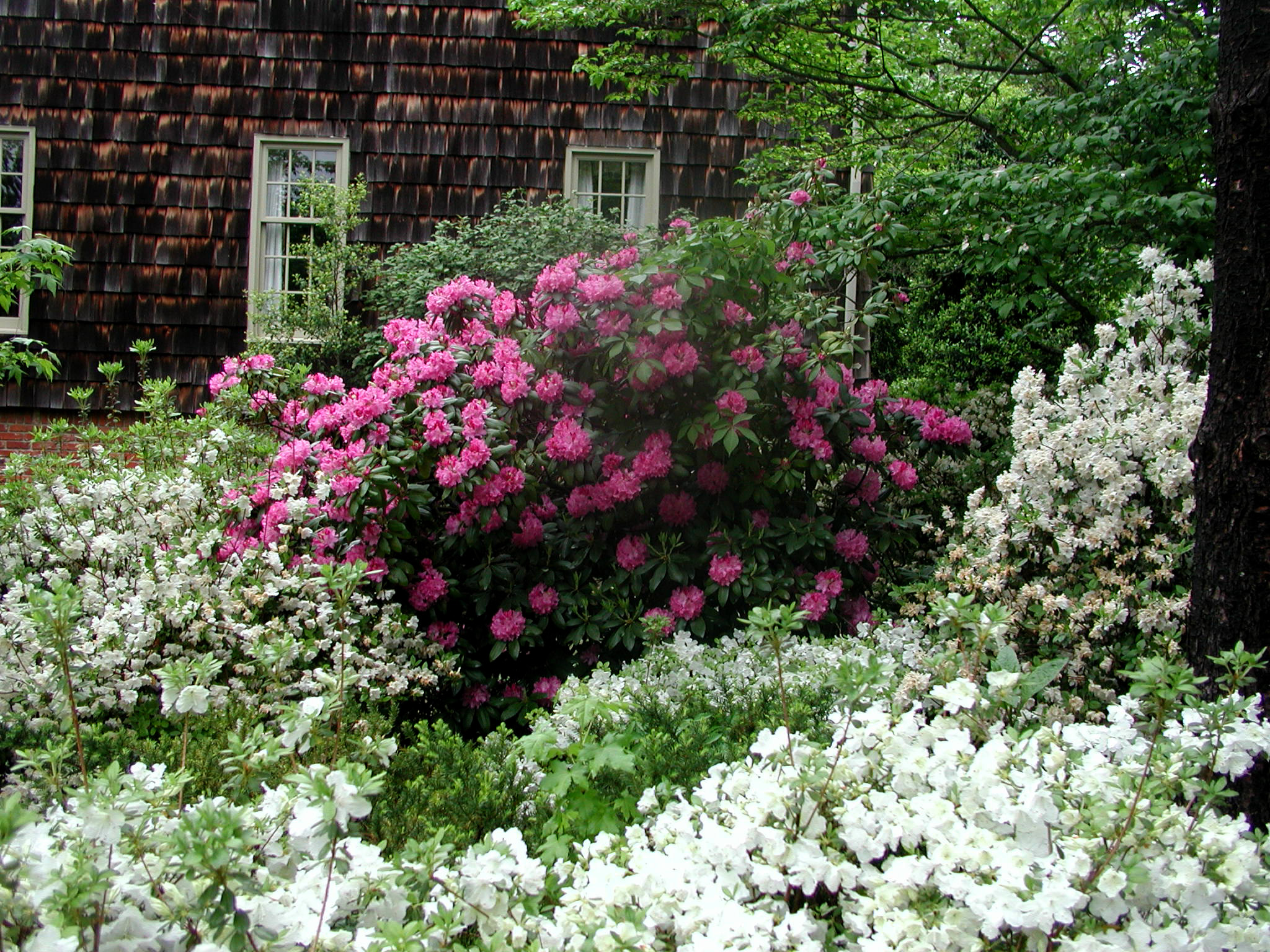Resource Library
Plant of the Week: Azaleas and Rhododendrons
Words are fascinating, so I always find myself chasing down the meaning and derivation of unfamiliar verbiage. In gardening there are lots of words — many of them from archaic Latin — that cause considerable confusion and consternation amongst practitioners of the gentle art. The names rhododendron and azalea represent well known groups of plants and showcase how botanical classification and common name usage get tangled in a welter of confusion.
First, we must recognize that to botanists, all azaleas are rhododendrons, but to gardeners, azaleas and rhododendrons are two very different kinds of plants. The genus Rhododendron, the largest group in the heath family, includes about 1,000 species, widely scattered throughout (mostly) the temperate regions of the northern hemisphere, with the largest number of species in Asia (but well represented in Europe and North America).
The first azaleas as we know them today arrived from Japan about 1680, and from Virginia a few years later. John Banister, an English clergyman and naturalist living in Virginia, collected more than 350 pressed sheets of plants that eventually ended in the hands of his former neighbor, the English botanist John Ray. Ray developed a truly awful way of naming plants, by assigning them a Latin description. One of Banister’s plants he called “Cistus Virginiana, flore et odore Periclymeni” – which translates to “a Virginia plant like a rock rose that smells like a honeysuckle.”
Carl Linnaeus (1707 – 1778) first published the name azalea in 1735 in his Systema Naturae, where he used it to describe a plant he had discovered on his Laplandic expedition of 1732, and which he called Azalea procumbens. The name azalea is from the Greek word azaleos, which means dry. This original “azalea” grew in dry, rocky crevices and is now known as Kalmia procumbens, a prostrate growing mountain laurel.
In 1753 Linnaeus published his seminal work, Species Plantarium, where he used the binominal (two name) system of plant naming we still use today. In it he described six species of Azaleas with five stamens and five species of Rhododendrons with 10 stamens. Banister’s plant that Ray called “Cistus” was one of these that Linnaeus named Azalea viscosa.
The name Rhododendron means “rose tree” and was appropriated by Linnaeus from a Greek name of the tropical oleander. For Linnaeus’ genius in developing a workable system of naming, his “sexual classification” system that relied on counting the various parts of the flower were too confining to encompass the variation found in nature.
By 1800 as new azalea and rhododendron plants were discovered, it became impossible to shoehorn new plants into these two groups, so taxonomists transferred all the azaleas, save Azalea procumbens – which later was transferred to the mountain laurel genus – into the Rhododendron genus. To the taxonomists – who are bean counters at heart – this made perfect sense. To gardeners it made no sense at all.
By the early 1800s, serious azalea breeding efforts began in Europe where the deciduous azaleas from North America were married with deciduous species from Asia. By the 1830s evergreen azaleas from China and Japan began to be used to create the Belgium azaleas which are the ancestors of the azaleas bushes growing around our homes today.
Up until World War II, American botanists continued to use the genus name Azalea to describe the 18 or so deciduous azaleas native to North America, but finally they surrendered and all azaleas became officially recognized as Rhododendrons. Unfortunately, within the genus Rhododendron, the plants we know as azaleas do not form a cohesive group so they are scattered amongst the various subfamilies within the genus.
But, as gardeners, we know the difference.
For more information about horticulture or to see other Plant of the Week columns, visit Extension’s Website, www.uaex.uada.edu, or contact your county extension agent. The Cooperative Extension Service is part of the U of A Division of Agriculture.
